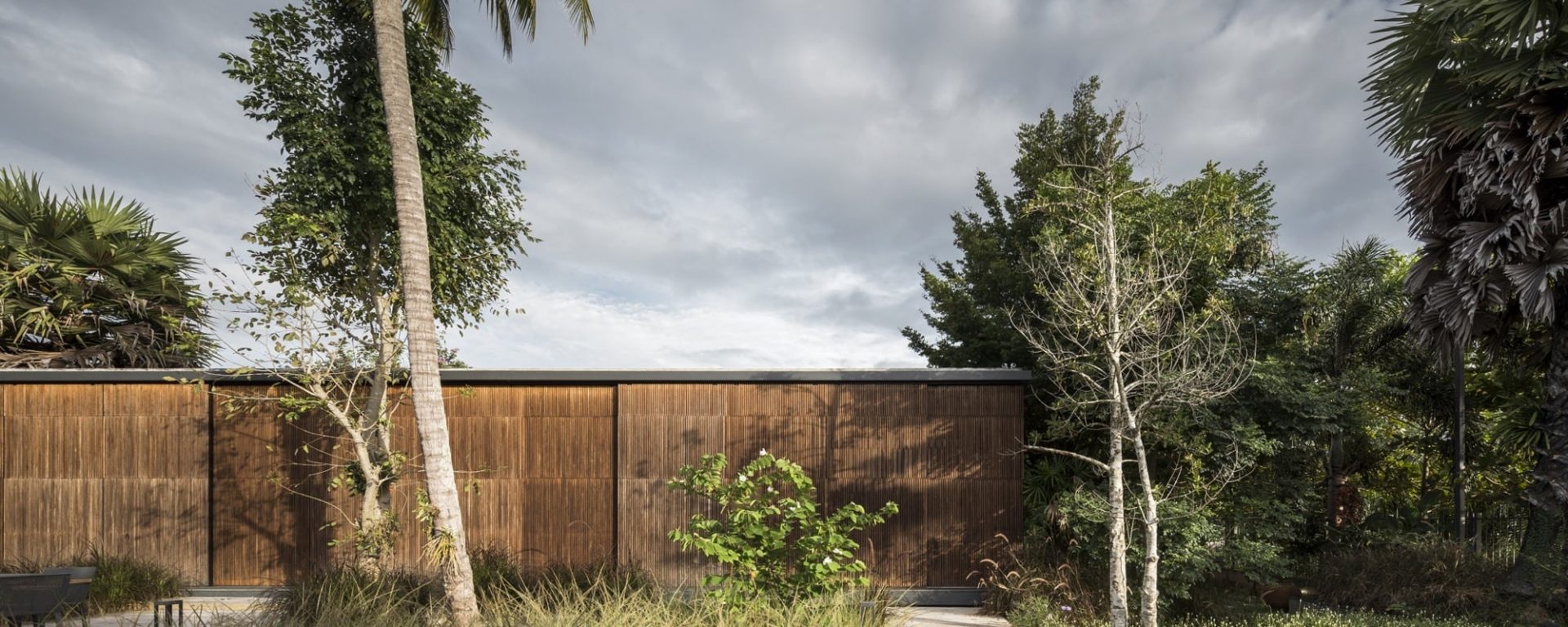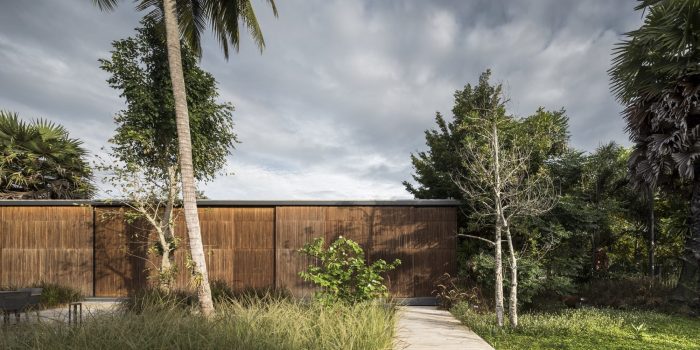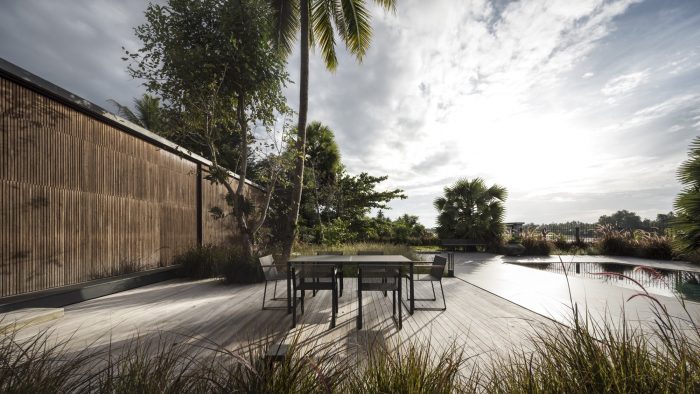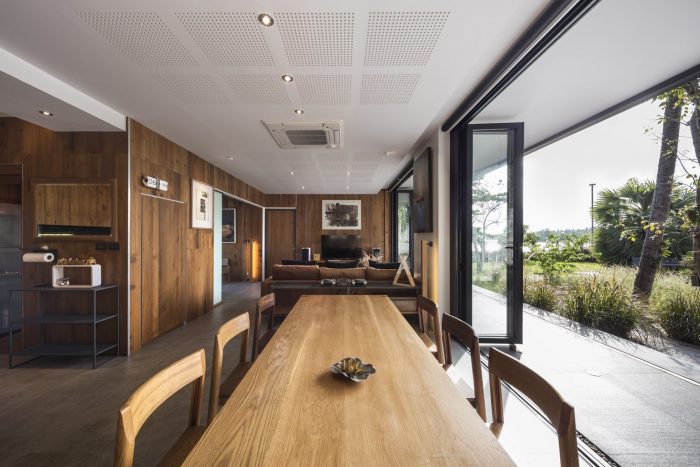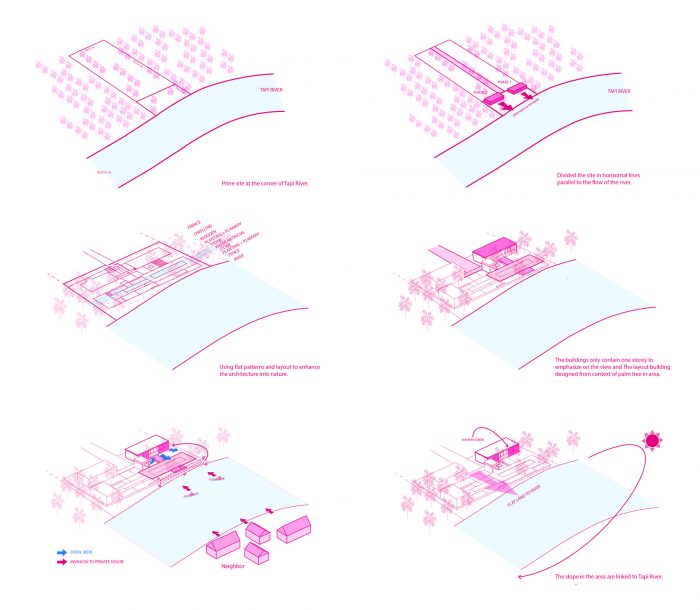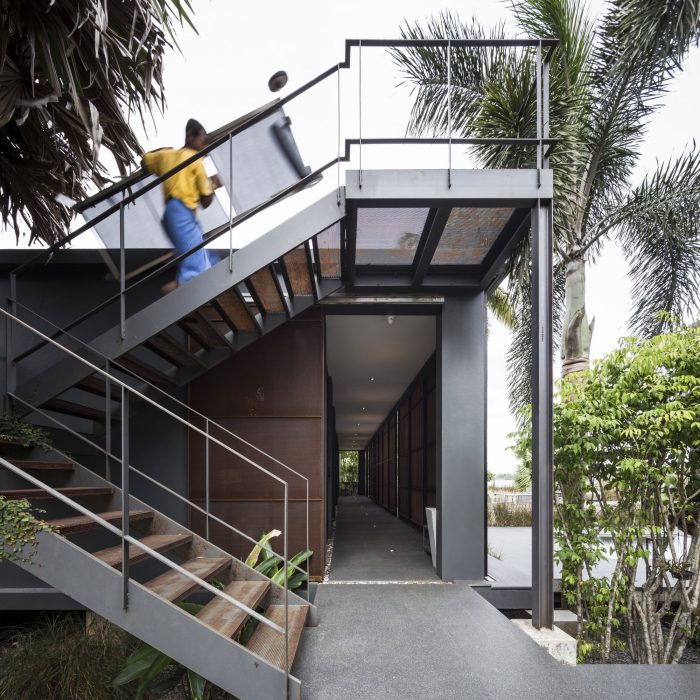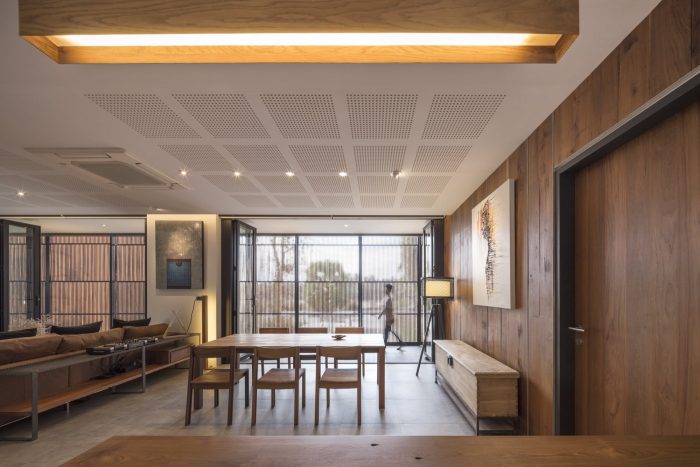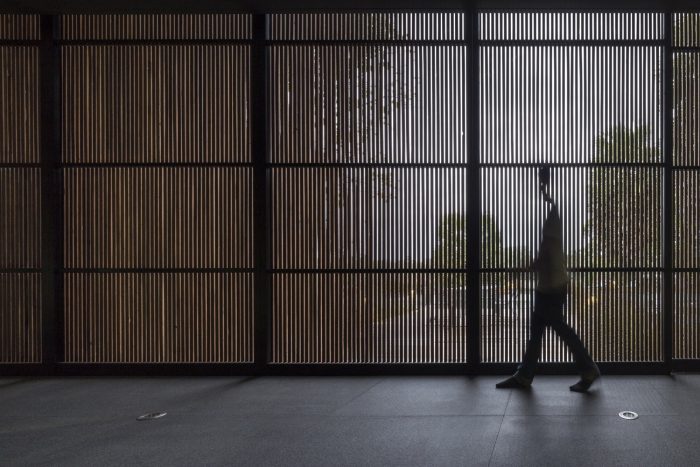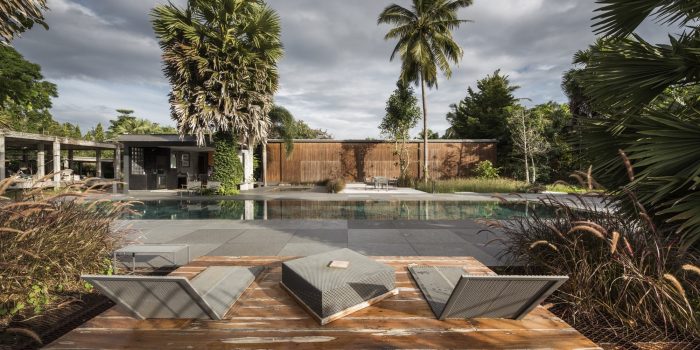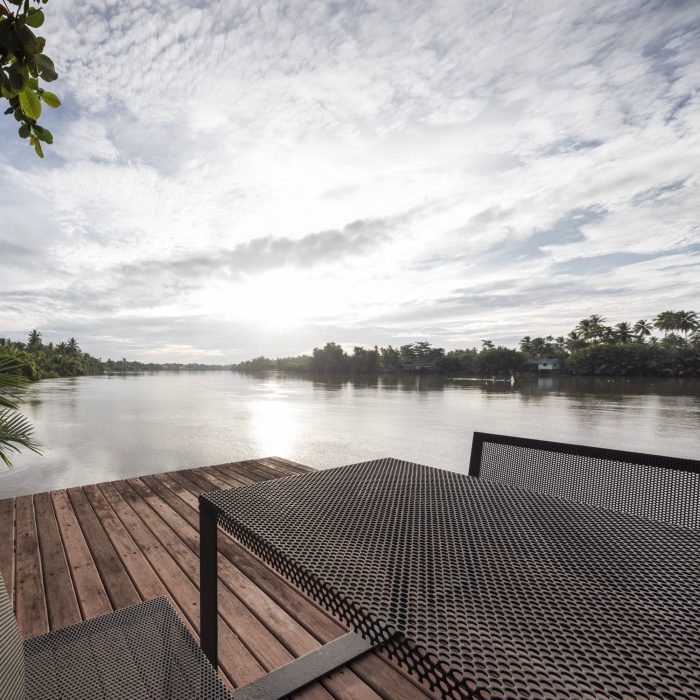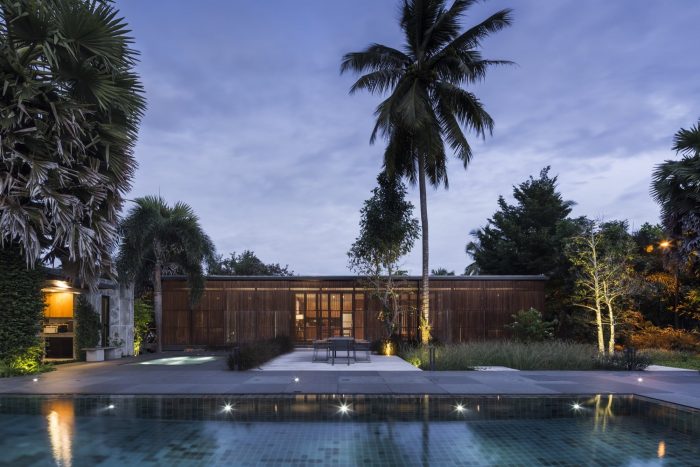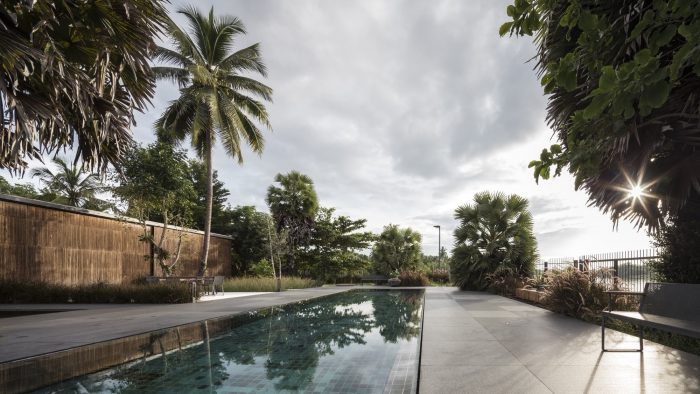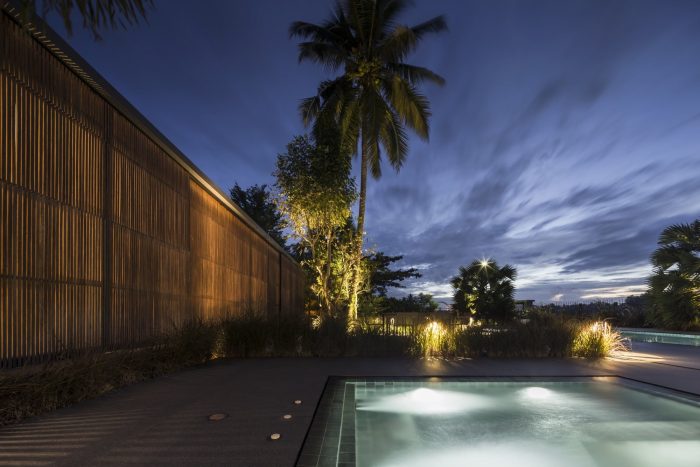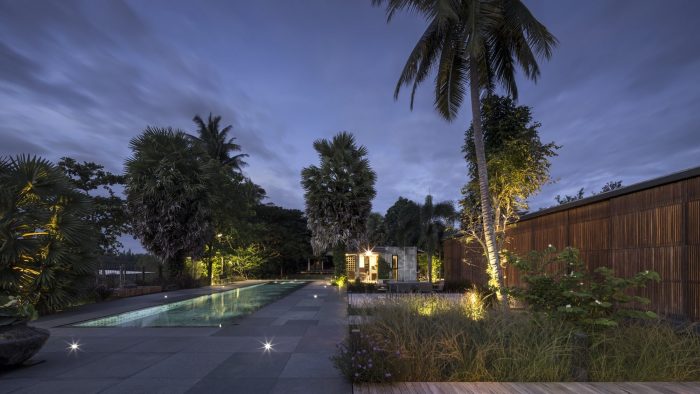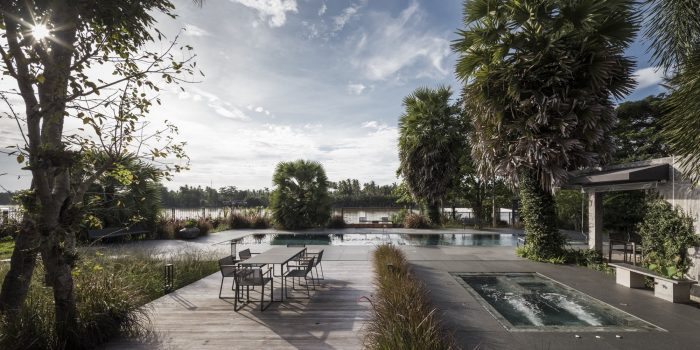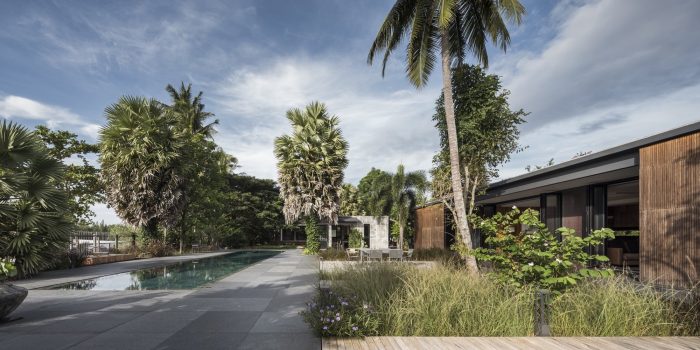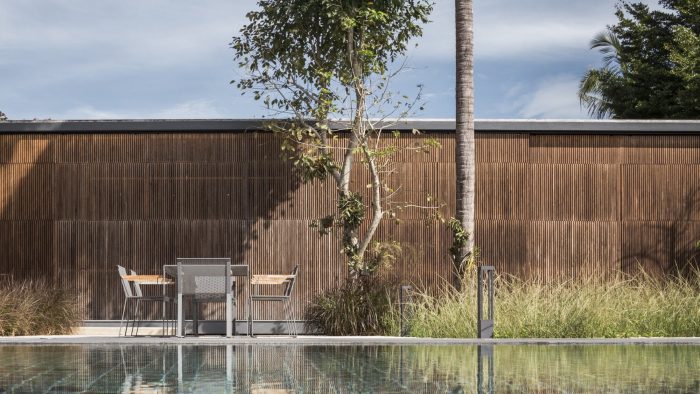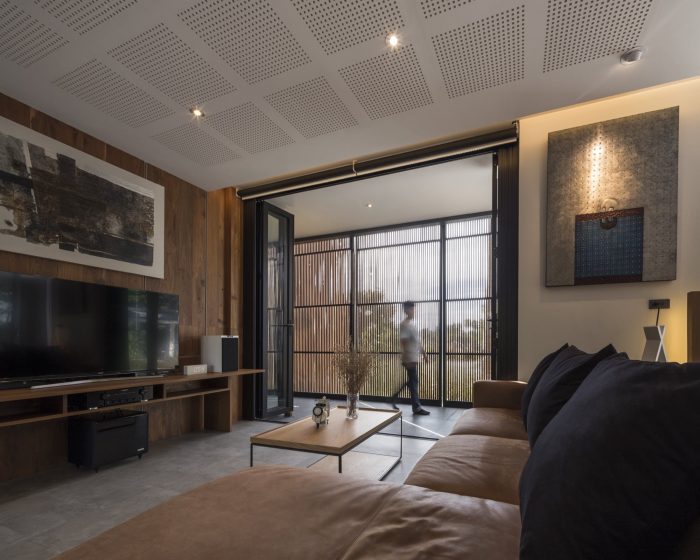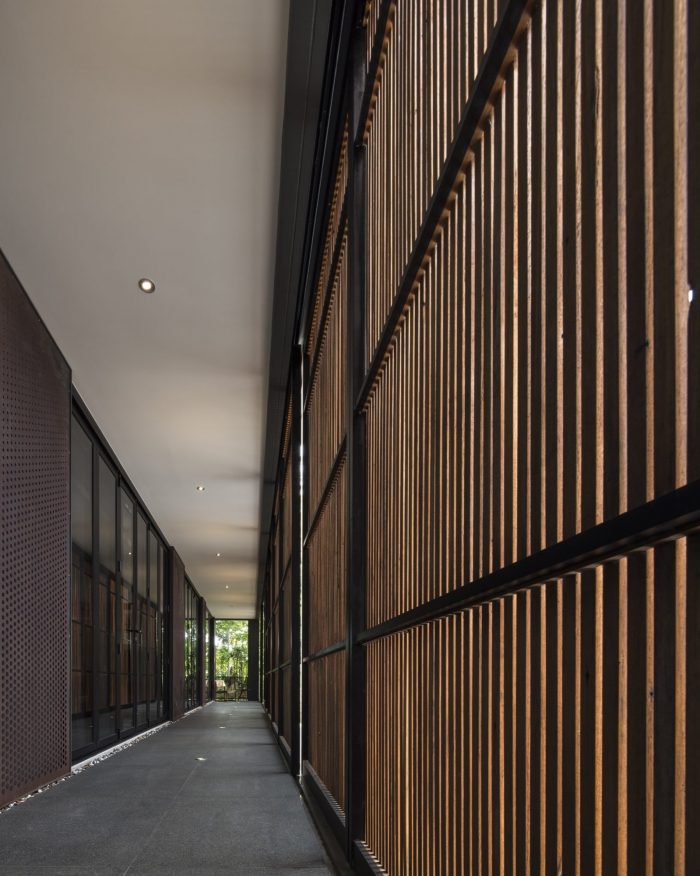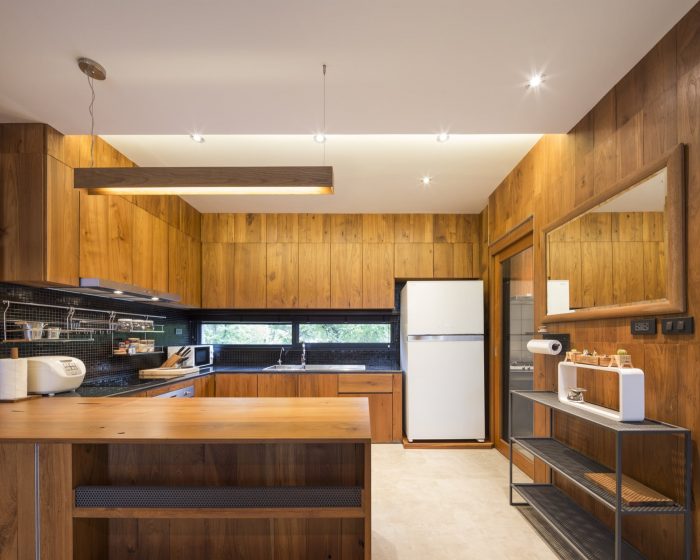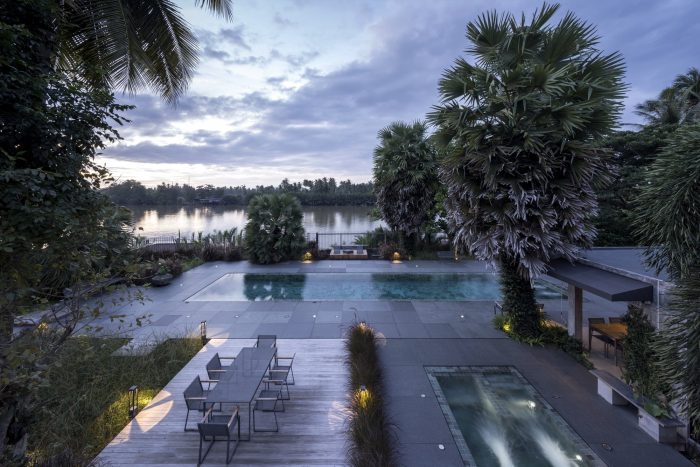在住进自己位于素叻他尼府一个拥挤的铝制工厂后,客户为他的度假屋寻找了一个宽敞的、被自然包围的地方。结果,在泰国南部最长的河流–塔皮河的蜿蜒处,找到了一个长167米、宽75米、被美丽的巴尔米拉棕榈树包围的地方。这就是Baan Nai Bang项目的开始。
After living in his own aluminium manufacturing factory in a congestion of Surat Thani, the client searched for a spacious and nature-surrounded location for his vacation house. The result was the 167-meter-long and 75 meters-wide site surrounded by beautiful Palmyra palms, at the meander of the longest river in southern Thailand – Tapi River. That was the beginning of Baan Nai Bang project.
对平地和河流的认识
由于位于塔皮河蜿蜒处的西向平地,使其拥有165米宽的河道全景,建筑师加强了周围环境的独特性,并设计了这个一层的度假屋。在总体规划中,Baan Nai Bang被放置在与河流平行的地方。同时,景观建筑被设计成非常平坦的水平线。两者都是为了在河流、土地和房屋之间创造出广泛的空间感和一致性,并将周围环境的气氛带入房屋。
The Perception of Flat Land and the River
Due to its west-facing, flat site at the meander of the Tapi River which gives the site an expansive panoramic view of 165-meter-wide of the river, the architects enhanced the uniqueness of the surroundings as well as designed this one-storey vacation house. For master planning, the Baan Nai Bang was placed parallel to the flow of the river. While, the landscape architecture was designed to be exceedingly flat to the horizontal line. Both were meant to create an extensive sensation of the space and consistency between the river, the land and the house, as well as to bring the atmosphere of the surroundings into the house.
此外,景观建筑的设计是分层的,但以水平线为基础,划分不同的区域,从第一层的土地到最后一层的河流。从生活层、木头层、石头层、人工水层开始,到自然水层–塔皮河。这些不同的层由特定的材料和植物界定,没有像墙或栅栏那样的垂直边界。同样,房子的规划是开放式的,所有的服务都位于房子的后面,为房子的前面创造宽敞的内部空间,并增加与河流的联系。
Moreover, the landscape architecture was designed as layering, yet based on horizontal line, to divide different areas, started from the first layer of the land to the last layer – the river. Began with the living layer, the wooden layer, the stone layer, the artificial water layer, to natural water layer – the Tapi River. These different layers were defined by particular materials and plants, no vertical boundaries like walls or fences. Similarly, the house’s plan was an open-plan, which all services were located at the back of the house, to creating spacious interior for the front of the house and to increase the connection to the river.
然而,建筑师们关注的是当地的环境。由于船是泰国人的主要交通工具,特别是那些住在河边的人,这意味着人们可以沿着河边划船,并通过无边界的房子看。因此,为房子创造隐私成为优先事项之一。
However, the architects concerned about the local context. Since boats were main transportation for Thai people, especially those living along the rivers, it meant people could paddle a boat along the river and looked through the borderless house. Consequently, creating privacy to the house became one of the priorities.
建筑师没有在土地的尽头放置栅栏,因为栅栏会阻挡全景,而是设计了巨大的滑动烧烤板,由各种尺寸的剩余柚木制成,客户可以在需要隐私时滑动烧烤板。此外,这些面板可以阻挡来自西方的强烈阳光穿透房屋。
Instead of placing a fence at the end of the land which would block the panoramic view, the architects designed huge sliding grilled panels, made from various sizes of leftover teak, which allowed the client to slide the panels when he needs privacy. Besides, these panels could block the strong sunlight from the west to penetrate the house.
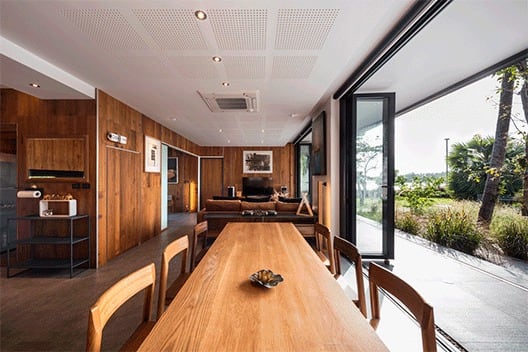
Architects: EKAR
Area : 174 m²
Year : 2016
Photographs :Chalermwat Wongchompoo
Manufacturers : Indez, Taksin
Interior Architect : EKAR
Landscape Architect : EKAR
Contractor : Smart Development
Owner : Pheradetch Pheralerdkid
Cost : THB 10M
City : Bang Bai Mai
Country : Thailand

